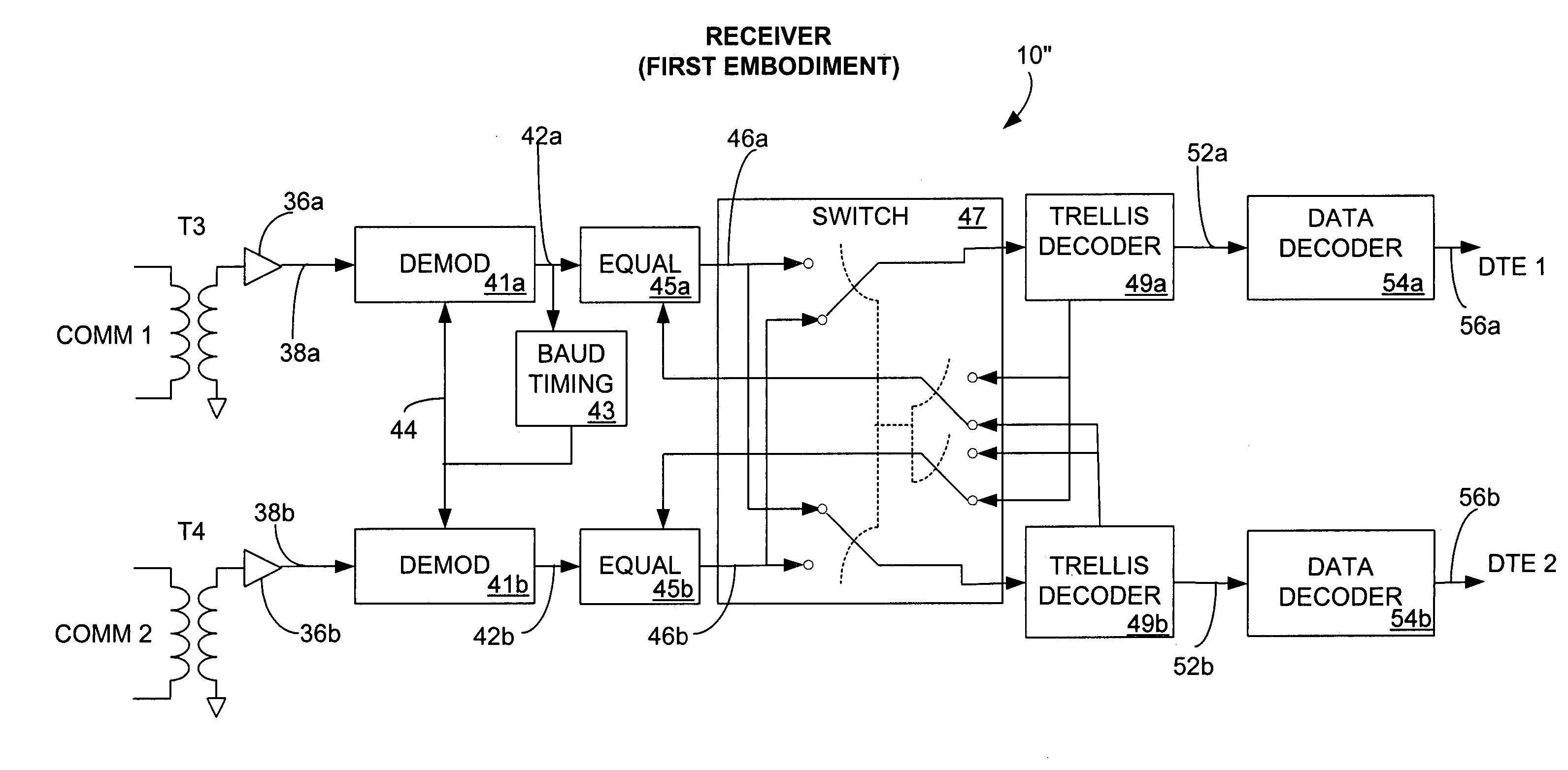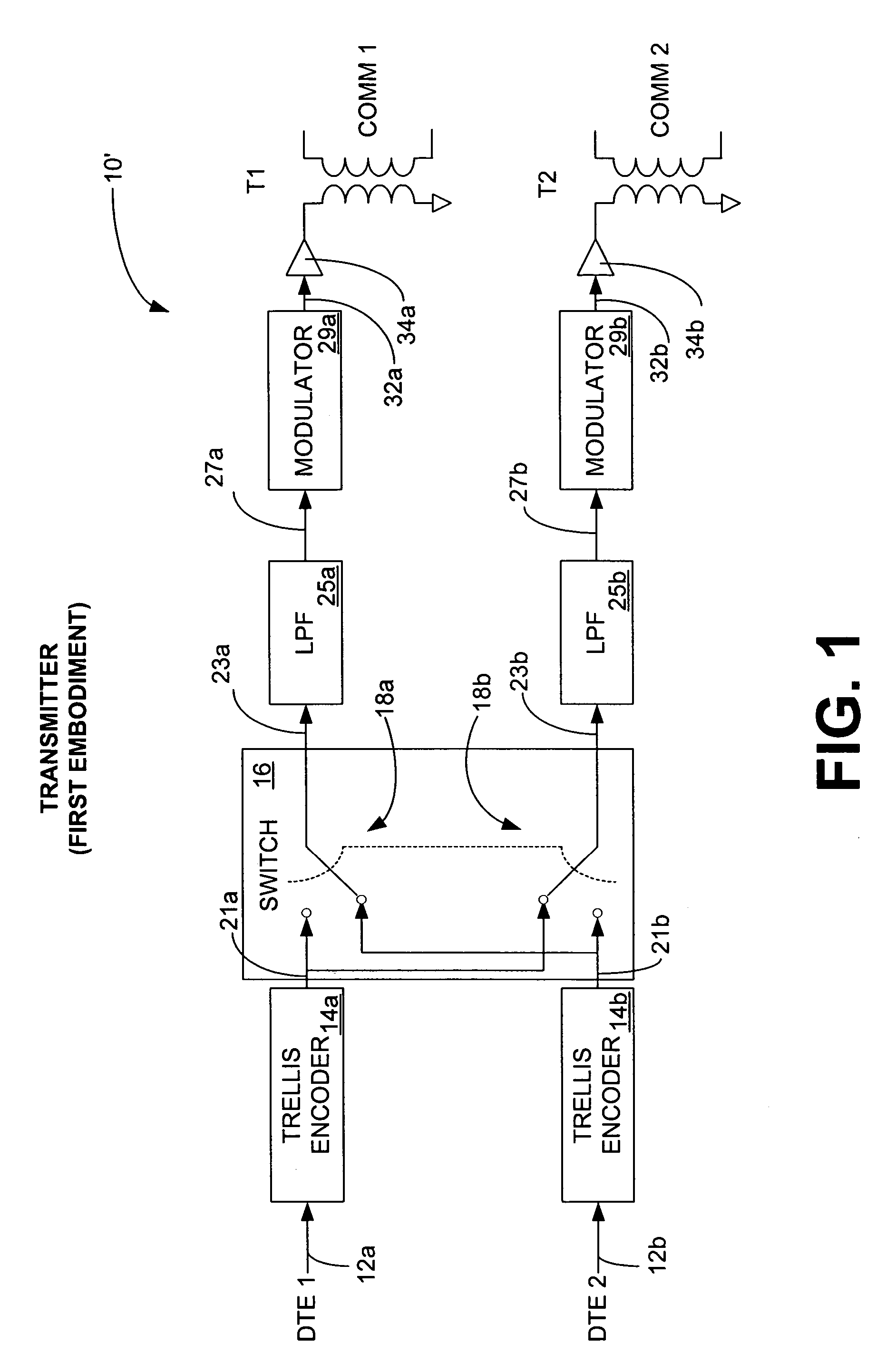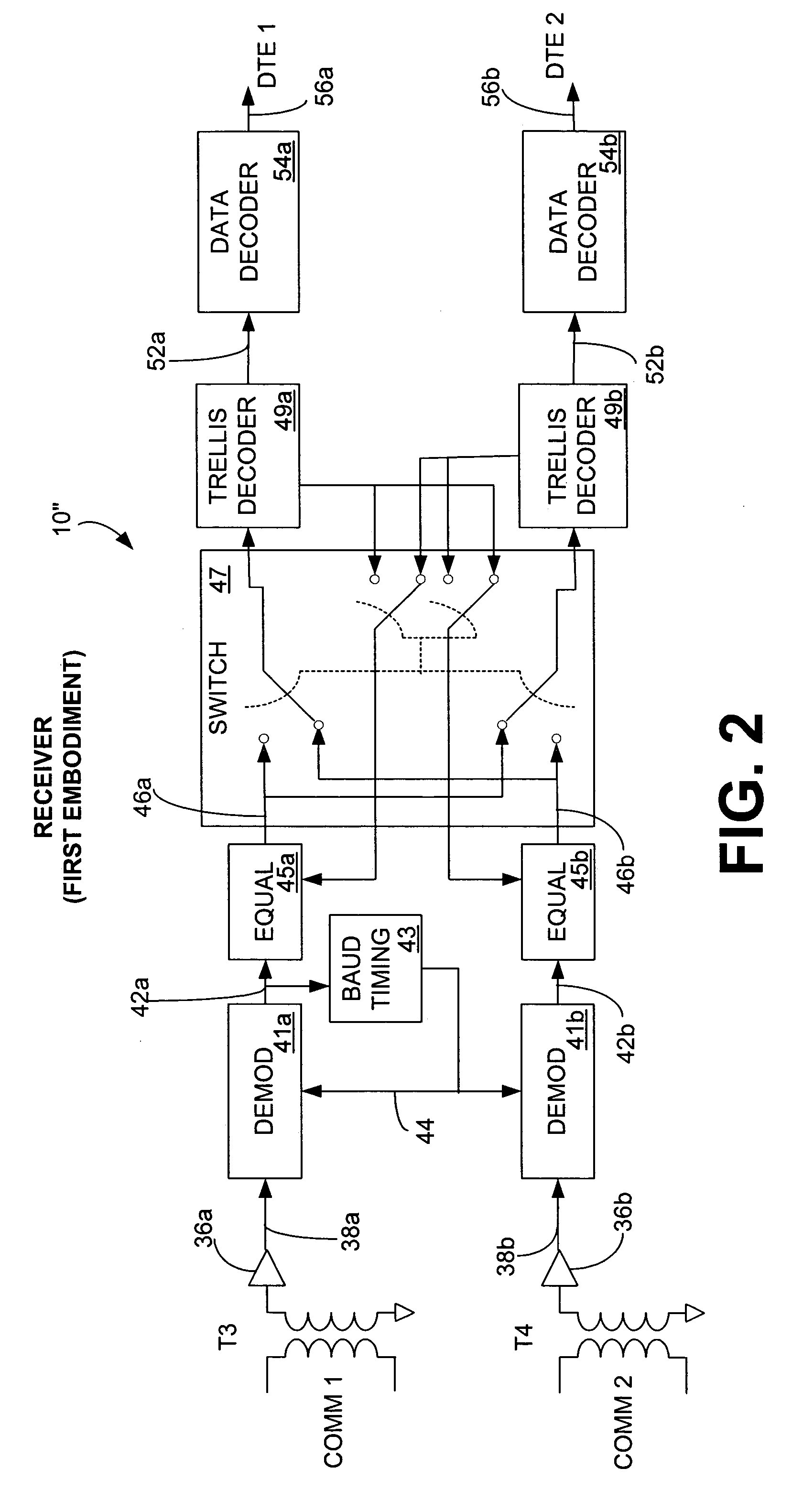Space diversity trellis interleaver system and method
a space diversity and interleaver technology, applied in the field of communication and modems, can solve the problems of significant degraded performance of the decoder associated with the receiver, adverse impulse noise in the connection and equipment, and degraded performance, so as to maximize the data rate of communication and minimize noise distortion
- Summary
- Abstract
- Description
- Claims
- Application Information
AI Technical Summary
Benefits of technology
Problems solved by technology
Method used
Image
Examples
first embodiment
I. First Embodiment
[0027]FIGS. 1 and 2 illustrate a transmitter 10′ and a receiver 10″, respectively, in accordance with a first embodiment of the space diversity trellis interleaver system.
[0028]With reference to FIG. 1, the transmitter 10′ receives two data streams 12a, 12b associated with channels 1, 2 from data terminal equipment (DTE), namely, DTE1, DTE2, respectively. Each of the data streams 12a, 12b is passed through a respective trellis encoder 14a, 14b. Trellis encoders are well known in the art and need not be described in any further detail. Although not limited to this particular configuration, in the preferred embodiments, the trellis encoders and decoders are designed in accordance with the ITU industry standard V.34.
[0029]A switch 16 is designed to actuate switching elements 18a, 18b concurrently after each baud (or symbol period), which corresponds to a trellis symbol and which corresponds to a data symbol or fraction thereof (if, optionally, fractional rate encodin...
second embodiment
II. Second Embodiment
[0041]A second embodiment of the space diversity trellis interleaver system of the present invention is illustrated in FIGS. 3 and 4. FIGS. 3 and 4 illustrate a transmitter 60′ and a receiver 60″, respectively, for implementing this second embodiment. An advantage of this second embodiment is that the data rates on the communication connections COMM1, COMM2 can be separately and independently regulated and changed, whenever appropriated, depending upon the noise conditions of each connection. The rates are changed via a data throttling, mapping, or other operation in connection with each communication path. As an example, on one path, a mapping operation could be used to define each symbol with 8 bits, whereas on the other noisier communication path the mapping could be set to define each symbol with 6 bits. Accordingly, the data rate of the former would be faster than the data rate of the latter, and the data rates can be independently changed, upon initializat...
third embodiment
III. Third Embodiment
[0060]When operating in dual channel mode to achieve greater reach, the channel symbol rate is low enough that a single encoder can support both channels 1, 2. A single encoder may alternately provide signals to each channel 1, 2, thereby reducing requisite hardware in the transmitter. The third embodiment of the spaced diversity interleaver system of the present invention implements such an encoder and is illustrated by way of block diagram in FIGS. 5 and 6. FIGS. 5 and 6 show a transmitter 130′ and a receiver 130″, respectively, for implementing the third embodiment.
[0061]With reference to FIG. 5, a randomizer 132 receives a data stream 131 (f(2n)) from the DTE1. The randomizer 132 operates at a symbol rate of 2 / Ts that is double the channel symbol rate of 1 / Ts. The data rate is the sum of the data rates of the two channels COMM1, COMM2.
[0062]In FIG. 5, the trellis encoder / mapper 136 includes, as shown in FIG. 3, the S / P converters 68a, 68b, the convolutional ...
PUM
 Login to View More
Login to View More Abstract
Description
Claims
Application Information
 Login to View More
Login to View More - R&D
- Intellectual Property
- Life Sciences
- Materials
- Tech Scout
- Unparalleled Data Quality
- Higher Quality Content
- 60% Fewer Hallucinations
Browse by: Latest US Patents, China's latest patents, Technical Efficacy Thesaurus, Application Domain, Technology Topic, Popular Technical Reports.
© 2025 PatSnap. All rights reserved.Legal|Privacy policy|Modern Slavery Act Transparency Statement|Sitemap|About US| Contact US: help@patsnap.com



